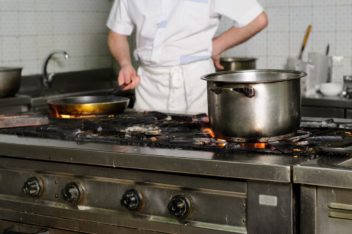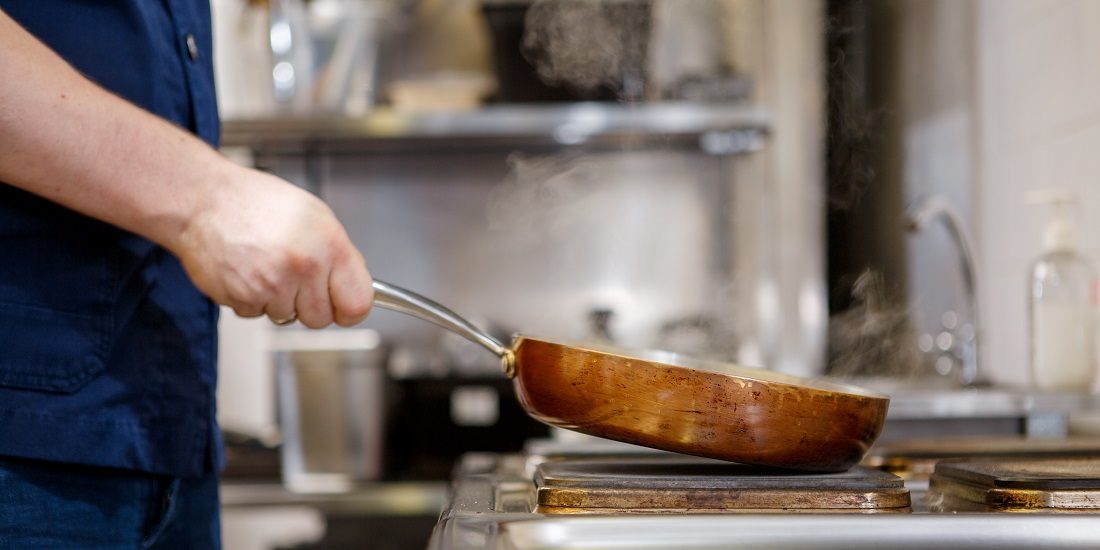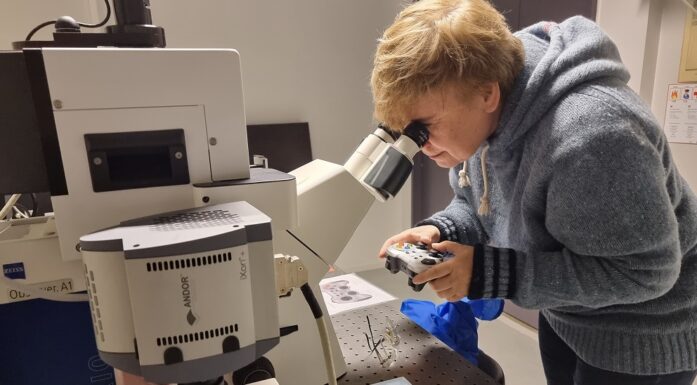Cooking fumes can create respiratory problems for chefs
Cooks live less long on average than people in most other occupational groups. Changes in their working environment could result in better health for many.
Chefs who spend a lot of time inhaling cooking fumes are at increased risk of respiratory problems, new research from NTNU suggests.
Chefs are among the occupational groups in Norway with the lowest life expectancy. The average life expectancy for people in this profession has risen to around 76 years the past few years, but it remains among the most vulnerable occupations. This may be due to several factors, including lifestyle.
A shorter life expectancy for chefs is not limited to Norway. Several European studies document increased mortality among chefs.
“In the field of occupational medicine, it’s not enough just to look at occupational groups as a whole. One useful method may be to look at individuals within the same occupation who are subjected to different types of exposure,” says Sindre Rabben Svedahl, a doctor in the Occupational Medicine centre at St. Olavs Hospital.
Svedahl recently completed his doctoral thesis on the working environment and health of cooks.

Chefs face an increased risk of respiratory illnesses if they spend a lot of time in front of a frying pan. Photo: Colourbox
- You might also like: Downsizing can be bad for your health
“How much time do you spend frying foods?”
Some chefs deal mostly with purchasing or have more administrative roles, so they are not necessarily exposed to as many cooking fumes. In this survey, nearly 900 chefs responded to a questionnaire about their work.
“One of the questions was “How much of your working day consists of cooking on a flat top griddle, grill or frying pan?” says Svedahl.
The research team hoped to identify any relationship between cooks who spent a lot of their working day frying foods, and chefs who had other roles.
They found a connection between exposure to cooking fumes and a form of bronchitis.
Respiratory problems more common
The results are consistent with other research in the field. Earlier studies also suggest that chefs are plagued more by respiratory issues than most people. These include disorders like asthma, emphysema and rhinitis, which is a chronic inflammation of the nasal mucosa.
As part of the NTNU studies, 24 volunteers were briefly exposed to cooking fumes. This is a small sample number and the exposure was short, so the experimental results are far from definitive. However, they showed that the respiratory tract has a tendency to respond even to this modest exposure.
The cooking profession has a relatively high dropout rate, but this is unrelated to respiratory problems. The NTNU studies show that unfavourable working hours are the most common reason that chefs quit, while muscle and skeletal complaints are the most common medical cause. Many cooks choose to hold out despite experiencing respiratory issues at work and the possible health consequences they can lead to in the long term.
Maybe cleaner air just hasn’t been a priority.
- You might also like: Saving energy through environmentally friendly design
Calling for common industry regs
Minimizing cooking fume exposure as much as possible can prevent respiratory problems for chefs. One problem is that there are no regulations that specifically address the situation cooks face.
“There are some general rules related to particulate matter in the air, but none specific to the cooks’ working environment,” says Svedahl.
But different particles are different. Some may not affect one’s health in the least. Cooking fumes include fat and fatty acids droplets that are so small that they can be inhaled deep into the lungs. Several carcinogens have been identified in the fumes.

Cooking fumes include fat and fatty acids droplets that are so small that they can be inhaled deep into the lungs. Several carcinogens have been identified in the fumes. Photo: Colourbox
In a competitive industry, where margins are often small, employers don’t feel they can afford to invest in the necessary technology to reduce chefs’ exposure to fumes – at least not as long as competitors will be saving money by not doing it.
“The solution might be to establish regulations for the entire industry,” says Svedahl.
Several years follow–up
“As part of Svedahl’s PhD project, we’ve also started a ‘prospective cohort’ at the Occupational Medicine centre. Starting in 2010 and continuing for five years, we interviewed as many cook apprentices from Trøndelag and Møre og Romsdal counties as we could get our hands on about their working environment and health,” says consultant Bjørn Hilt at St. Olavs Hospital.
Hilt is also an adjunct professor at NTNU and has been one of Svedahl’s advisors.
“Our intent is to follow them in their cooking career and track the conditions in their working environment over several years. A prospective cohort is relatively rare in the working environment context. We have high expectations for what we’ll learn over the years. Then we’ll know what individual cooks have to deal with and can try to correlate the working conditions with various health conditions that arise later,” says Hilt.
Researchers have carried out the work with the support of NHO’s Working Environment Fund.
Important for support
“The working environment and health of cooks is a topic we’ve been working on for many years. At first only at the St. Olavs Occupational Health centre, but later also in collaboration with the Department of Industrial Economics and Technology Management (IØT),” says Kristin V. Hirsch Svendsen, a professor at NTNU’s IØT. She was Svedahl’s other advisor.
This collaborative effort has so far generated four master’s projects and two doctoral theses since 2001. Ann Kristin Sjaastad defended her dissertation on what chefs are exposed to in 2010 at IØT. She investigated which substances are found in cooking fumes.
“The fact that we can now show that this exposure results in poorer lung health is important in order to get support for implementing measures in the industry,” says Professor Svendsen.
Creating a healthy working environment in professional kitchens is important and can help prevent both illness and premature death, the research group concluded.
Source: NTNU Open. Cooks, work environment and health: Experimental studies of exposure to cooking fumes, and epidemiological investigations in a cohort.





